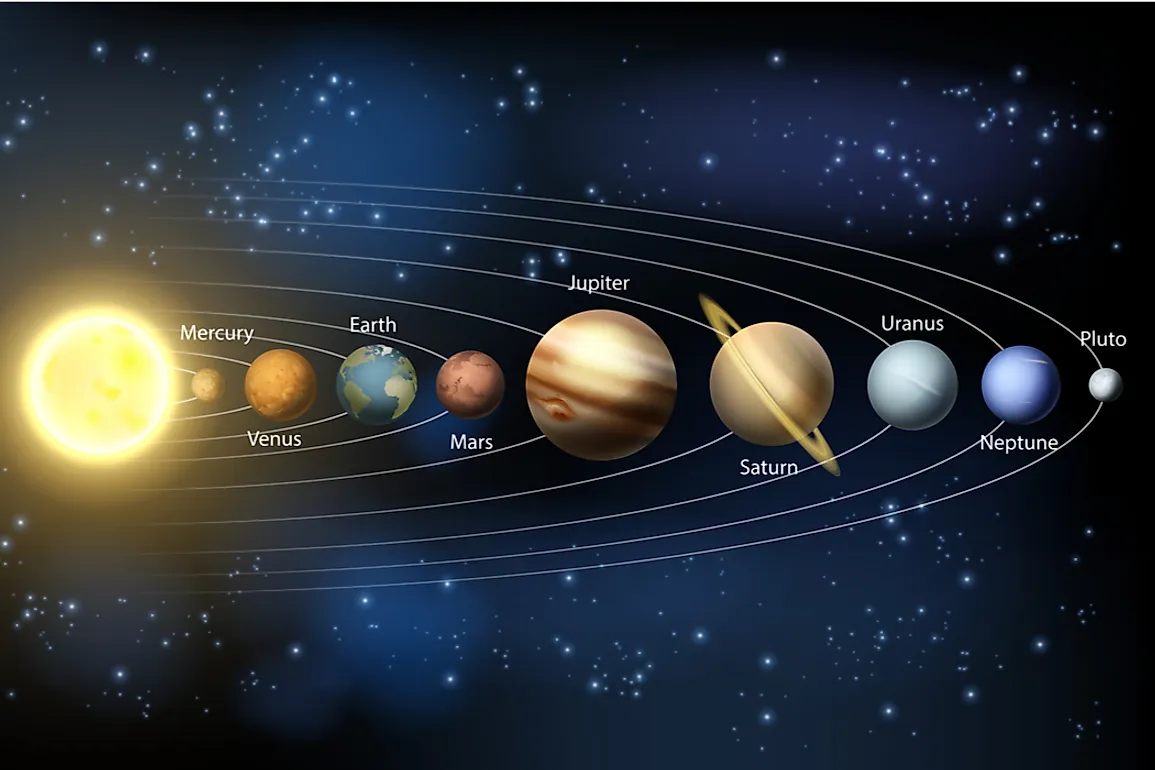What is Kepler's First Law of Planetary Motion?

Kepler’s First Law of Planetary Motion states that the orbit of a planet is an ellipse, with the sun located on one of the two foci. Contrary to many people’s beliefs and understanding, the orbits that the planets move on are not circular. The Kepler’s First Law of Planetary explains the real shape of the orbits. A circle has fixed points that are equidistant from the center, unlike an ellipse which consists of points with a certain distance from two points, which are referred to as foci. The foci are situated on the major axis of the ellipse such that the sum of the distance between any point on the ellipse and the two foci is constant.
Reason for the Assumption
The pioneer astronomers who attempted to make models of the solar system assumed that the orbits were perfectly circular. Therefore, they made models that perpetuated perfect circular orbits. This is probably why most individuals believed that the orbits were circular. Plato’s astronomical works also highlights the orbits as perfectly circular. However, it should be noted that most of the orbits are almost circular and with varied eccentricity.
Kepler’s Discovery
Johannes Kepler, a German astronomer discovered that the circular orbits were unrealistic. Therefore, he studied the astronomical objects and their orbits and came up with laws to prove that the orbits were elliptical and not circular. Kepler was making a case study on the orbital motions of planet Mars when he discovered that the orbits were elliptical, or rather oval-like in shape. Calculations of the eccentricity of planet Mars’ orbit indicate that it is perfect ellipse shape. It is also proof enough that orbits of other planets located farther from the sun are also ellipses. He wrote to another astronomer, David Fabricius, to explain his discovery. He penned his new-found discovery on October 11, 1605, with most of his works published between 1605 and 1609.
How Effective Is Kepler’s First Law of Planetary Motion
Kepler’s first law of planetary motion came in handy in explaining the Heliocentric Theory proposed by Nicolaus Copernicus. Nicolas Copernicus was attempting to explain why the speed of the planets while moving around the sun varied. It was quite a challenge for him to explain and provide evidence for his discovery. But with the Kepler’s First Law of Planetary motion, he was able to explain his theory, which was later proved to be valid.
How Valid Is Kepler’s First Law of Planetary Motion
If the orbits were perfectly circular, then the phenomena of perihelion and aphelion could not have been possible. Perihelion and aphelion occur because the orbits are elliptical. In 1687, Isaac Newton validated all of the three Kepler’s Laws and found that they would apply in the solar system to an extent as a consequence of his own low of motion and universal gravitation. The orbits have also been found to become more elliptical as the years go by. The eccentricity of the orbits keeps on increasing after over 10 decades. This explains why the dates of perihelion and aphelion are not fixed but rather keep changing.











